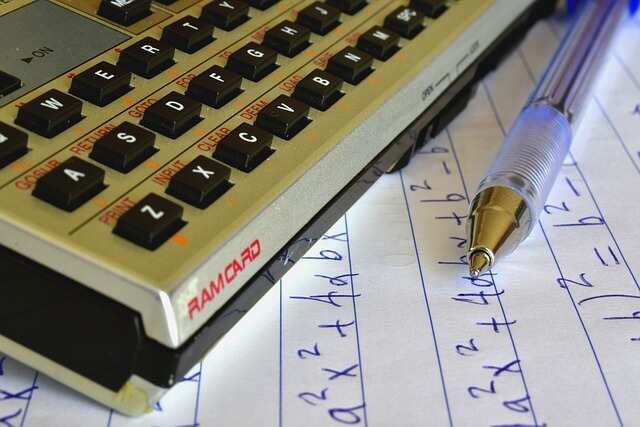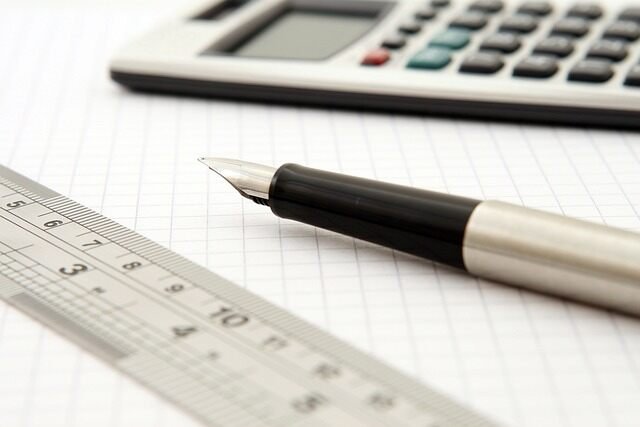Math Symbol
A math symbol or mathematical symbol is a figure that is used to represent action, relation, on mathematical objects or for structuring the other symbols that occur in a formula. As formulas are entierely constitued with symbols of various types, many symbols are needed for expressing all mathematics.
Here are a list of symbols supported by Algebra Calculator:
+ (Addition)
– (Subtraction)
* (Multiplication)
/ (Division)
^ (Exponent: “raised to the power”)
sqrt (Square Root) (Example: sqrt(9))
< (less than) > (greater than)
<= (less than or equal to) >= (greater than or equal to)
Table of Math Symbol
| Symbol | Name | Read as | Meaning | Example |
|---|---|---|---|---|
= | equality | equals, is equal to | If x=y, x and y represent the same value or thing. | 2+3=5 |
≡ | definition | is defined as | If x≡y, x is defined as another name of y | (a+b)2≡a2+2ab+b2 |
≈ | approximately equal | is approximately equal to | If x≈y, x and y are almost equal. | √2≈1.41 |
≠ | inequation | does not equal, is not equal to | If x≠y, x and y do not represent the same value or thing. | 1+1≠3 |
< | strict inequality | is less than | If x<y, x is less than y. | 4<5 |
> | is greater than | If x>y, x is greater than y. | 3>2 | |
≪ | is much less than | If x≪y, x is much less than y. | 1≪999999999 | |
≫ | is much greater than | If x≫y, x is much greater than y. | 88979808≫0.001 | |
≤ | inequality | is less than or equal to | If x≤y, x is less than or equal to y. | 5≤6 and 5≤5 |
≥ | is greater than or equal to | If x≥y, x is greater than or equal to y. | 2≥1 and 2≥2 | |
∝ | proportionality | is proportional to | If x∝y, then y=kx for some constant k. | If y=4x then y∝x and x∝y |
+ | addition | plus | x+y is the sum of x and y. | 2+3=5 |
– | subtraction | minus | x-y is the subtraction of y from x | 5-3=2 |
× | multiplication | times | x×y is the multiplication of x by y | 4×5=20 |
· | x·y is the multiplication of x by y | 4·5=20 | ||
÷ | division | divided by | x÷y or x/y is the division of x by y | 20÷4=5 and 20/4=5 |
/ | 20/4=5 | |||
± | plus-minus | plus or minus | x±y means both x+y and x-y | The equation 3±√9 has two solutions, 0 and 6. |
∓ | minus-plus | minus or plus | 4±(3∓5) means both 4+(3-5) and 4-(3+5) | 6∓(1±3)=2 or 4 |
√ | square root | square root | √x is a number whose square is x. | √4=2 or -2 |
∑ | summation | sum over … from … to … of, sigma | {\displaystyle \sum _{k=1}^{n}{x_{k}}} is the same as x1+x2+x3+xk | {\displaystyle \sum _{k=1}^{5}{k+2}=3+4+5+6+7=25} |
∏ | multiplication | product over … from … to … of | {\displaystyle \prod _{k=1}^{n}{x_{k}}} is the same as x1×x2×x3×xk | {\displaystyle \prod _{k=1}^{5}{k}}=1×2×3×4×5=120 |
! | factorial | factorial | n! is the product 1×2×3…×n | 5!=1×2×3×4×5=120 |
⇒ | material implication | implies | A⇒B means that if A is true, B must also be true, but if A is false, B is unknown. | x=3⇒x2=9, but x2=9⇒x=3 is false, because x could also be -3. |
⇔ | material equivalence | if and only if | If A is true, B is true and if A is false, B is false. | x=y+1⇔x-1=y |
|…| | absolute value | absolute value of | |x| is the distance along the real line (or across the complex plane) between x and zero | |5|=5 and |-5|=5 |
|| | parallel | is parallel to | If A||B then A and B are parallel | |
⊥ | perpendicular | is perpendicular to | If A⊥B then A is perpendicular to B | |
≅ | congruence | is congruent to | If A≅B then shape A is congruent to shape B (has the same measurements) | |
φ | golden ratio | golden ratio | The golden ratio is an irrational number equal to (1+√5)÷2 or approximately 1.6180339887. | |
∞ | infinity | infinity | ∞ is a number greater than every real number. | |
∈ | set membership | is an element of | a∈S means that a is an element of the set S | 3.5∈ℝ, 1∈ℕ, 1+i∈ℂ |
∉ | is not an element of | a∉S means that a is not an element of the set S | 2.1∉ℕ, 1+i∉ℝ | |
{,} | Set brackets | the set of | {a,b,c} is the set consisting of a, b, and c | ℕ={0,1,2,3,4,5…} |
ℕ | Natural numbers | N | ℕ denotes the set of natural numbers {0,1,2,3,4,5…} | |
ℤ | Integers | Z | ℤ denotes the set of integers (-3,-2,-1,0,1,2,3…) | |
ℚ | Rational numbers | Q | ℚ denotes the set of rational numbers (numbers that can be written as a fraction a/b where a∈ℤ, b∈ℕ) | 8.323∈ℚ, 7∈ℚ, π∉ℚ |
ℝ | Real numbers | R | ℝ denotes the set of real numbers | π∈ℝ, 7∈ℝ, √(-1)∉ℝ |
ℂ | Complex numbers | C | ℂ denotes the set of complex numbers | √(-1)∈ℂ |
x̄ | Mean | bar, overbar | x̄ is the mean (average) of xi | if x={1,2,3} then x̄=2 |
x̄ | complex conjugate | the complex conjugate of x | If x=a + bi, then x̄=a – bi where i=√(-1) | x=-4 + 5.3i, x̄=-4 – 5.3i |
Read also ? Geometry Formulas with Questions and Answers
Math Symbol (Unicode math symbol)
The first column shows the letter as typically rendered by the ubiquitous LaTeX markup system. The second column shows the Unicode code point. The third column shows the Unicode symbol itself (which will only display correctly on browsers that support Unicode and have access to a suitable font). The fourth column describes known typical (but not universal) usage in mathematical texts.
Read also ? Identity Mathematics | Examples, Questions and Answers





































